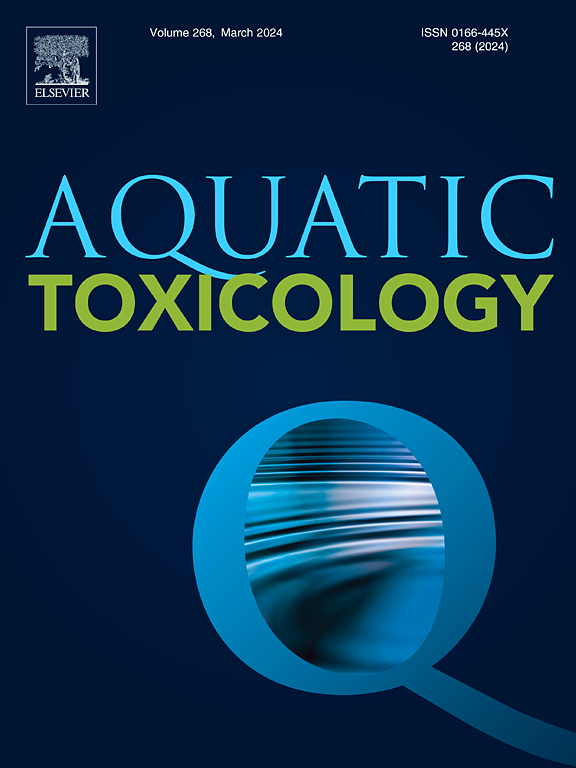Transcriptional modulation in Mediterranean Mussel Mytilus galloprovincialis following exposure to four pharmaceuticals widely distributed in coastal areas
IF 4.1
2区 环境科学与生态学
Q1 MARINE & FRESHWATER BIOLOGY
引用次数: 0
Abstract
Ecotoxicological risk and the mode of action of human drugs on non-target marine animals remain unclear, keeping a gap of knowledge on risks related to ecosystem disruption and chemical contamination of food chains.
Understanding these impacts is critical to developing proper waste management practices and regulatory frameworks to prevent long-term environmental and human health problems. This study investigates the impacts of Gemfibrozil, Metformin, Ramipril, and Venlafaxine, individually and combined on Mytilus galloprovincialis over 30 days and assesses persistent effects post-recovery using RNA-seq and 16S rRNA microbiota profiling. All pharmaceuticals caused few changes in the microbiota while gene expression analyses highlighted drug-specific alterations. Gemfibrozil exposure led to alterations in lipid and fatty acid metabolism, suggesting a similar mode of action to that observed in target species. Metformin significantly impacted the mussels' energy metabolism, with disruptions in specific genes and pathways potentially related to glucose uptake and insulin signaling. Metformin was also the treatment leading to the most significant changes in predicted functional profiles of the microbiota, suggesting that it may influence the microbiota's potential to interact with host glucose metabolism. Ramipril exposure resulted in the up-regulation of stress response and cell cycle regulation pathways and Venlafaxine induced changes in serotonin and synapse pathways, indicating potential similarities in mechanisms of action with target species. Mixture of the four pharmaceuticals severely impacted mussel physiology, including impairment of oxidative phosphorylation and compensatory activation of several pathways involved in energy metabolism. Despite recovery after depuration, changes in stress and energy related metabolism pathways suggests potential persistent effects from combined pharmaceutical exposure. Notably, the up-regulation of mTOR1 signaling in all treatments after 30 days underscores its key role in coordinating bivalve stress responses. The Transcriptomic Hazard Index (THI) calculated for each treatment indicates major/severe hazards after exposure that decreased to slight/moderate hazards after depuration.
求助全文
约1分钟内获得全文
求助全文
来源期刊

Aquatic Toxicology
环境科学-毒理学
CiteScore
7.10
自引率
4.40%
发文量
250
审稿时长
56 days
期刊介绍:
Aquatic Toxicology publishes significant contributions that increase the understanding of the impact of harmful substances (including natural and synthetic chemicals) on aquatic organisms and ecosystems.
Aquatic Toxicology considers both laboratory and field studies with a focus on marine/ freshwater environments. We strive to attract high quality original scientific papers, critical reviews and expert opinion papers in the following areas: Effects of harmful substances on molecular, cellular, sub-organismal, organismal, population, community, and ecosystem level; Toxic Mechanisms; Genetic disturbances, transgenerational effects, behavioral and adaptive responses; Impacts of harmful substances on structure, function of and services provided by aquatic ecosystems; Mixture toxicity assessment; Statistical approaches to predict exposure to and hazards of contaminants
The journal also considers manuscripts in other areas, such as the development of innovative concepts, approaches, and methodologies, which promote the wider application of toxicological datasets to the protection of aquatic environments and inform ecological risk assessments and decision making by relevant authorities.
 求助内容:
求助内容: 应助结果提醒方式:
应助结果提醒方式:


